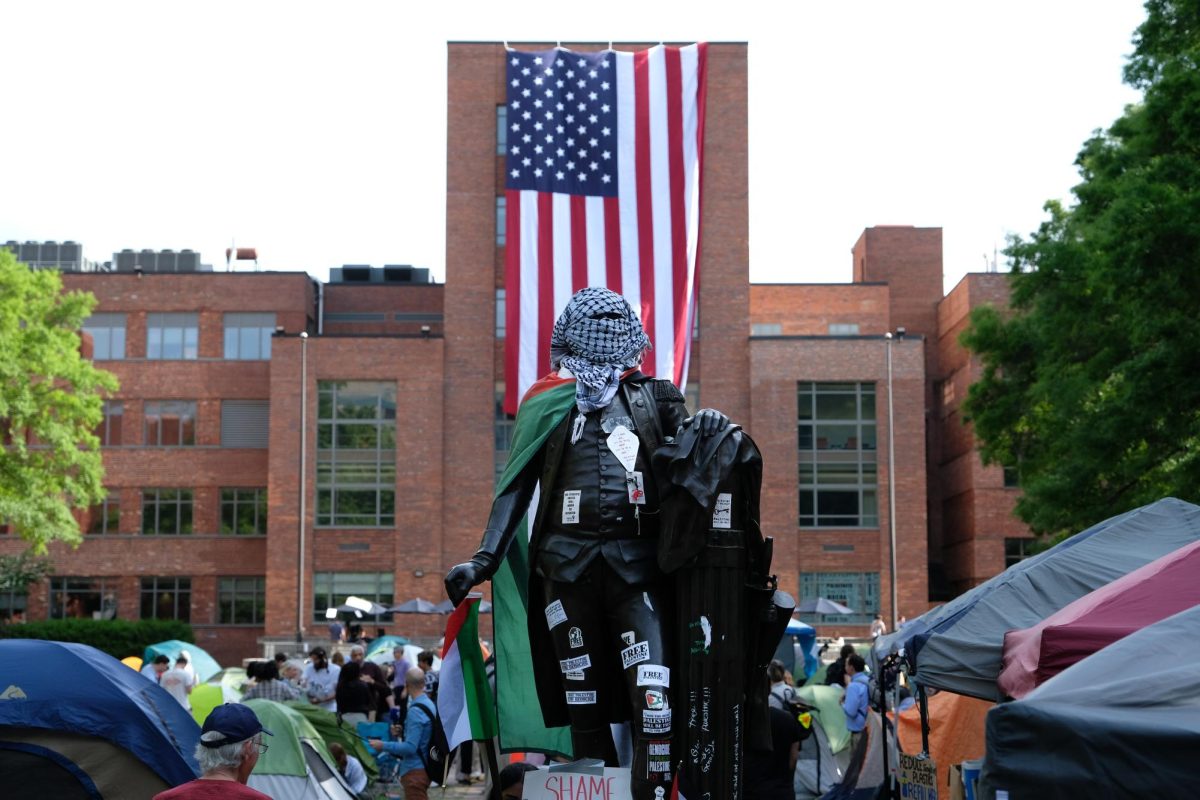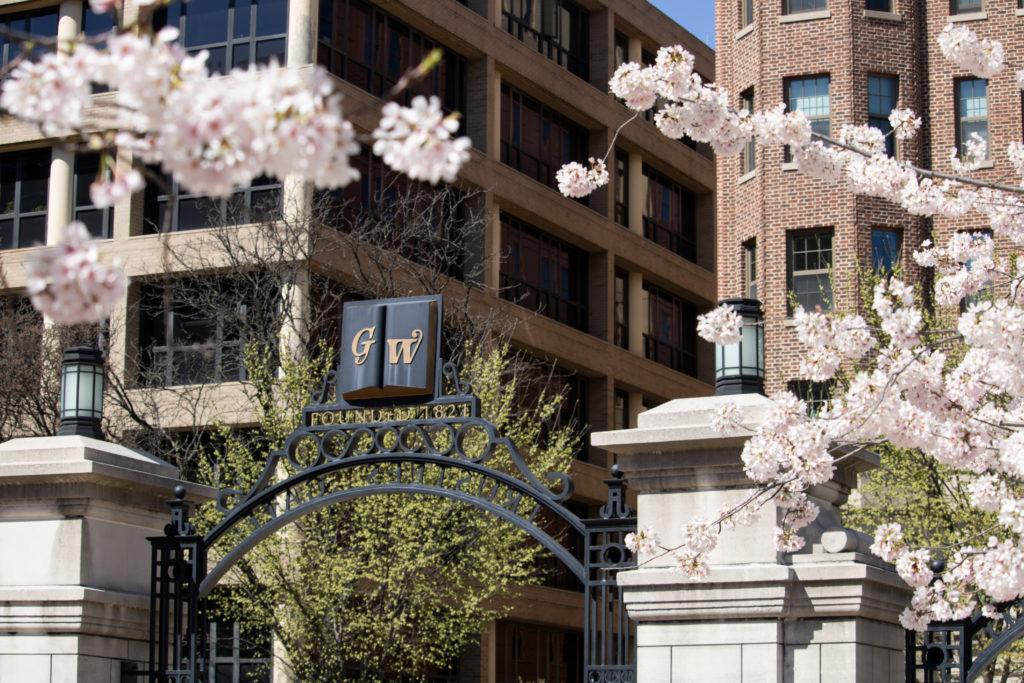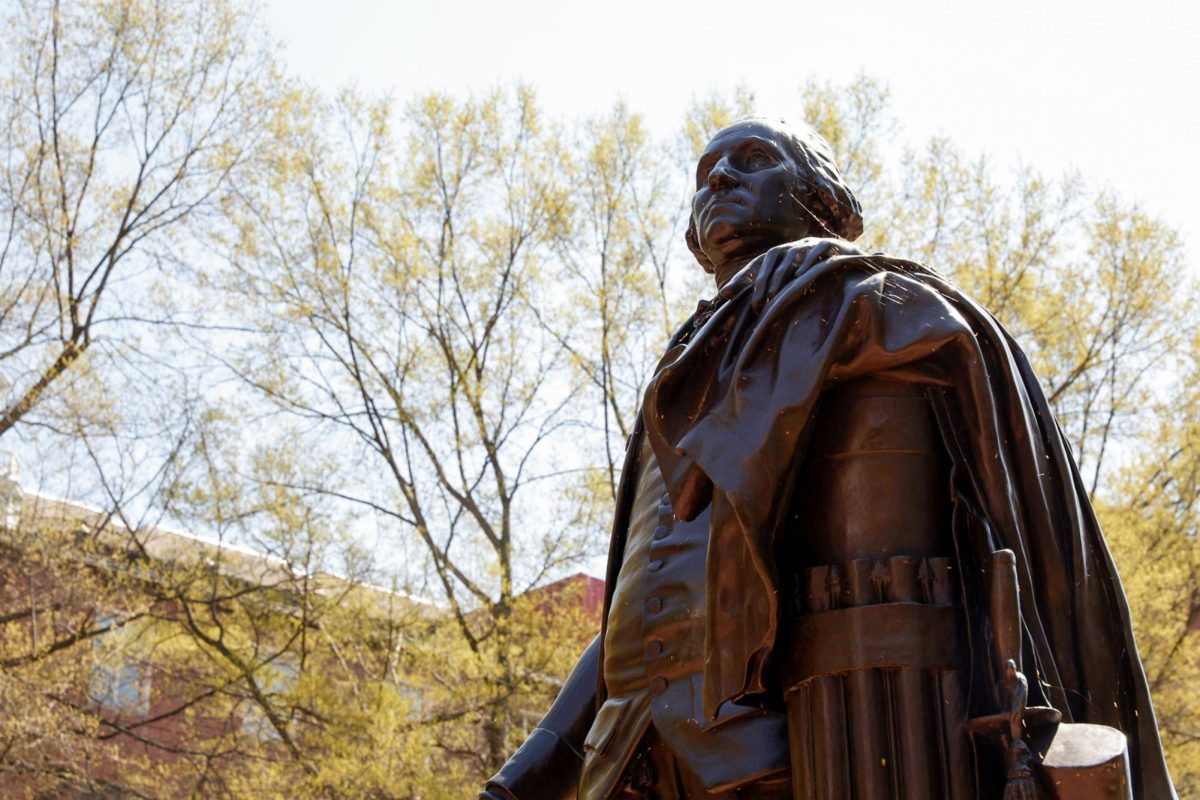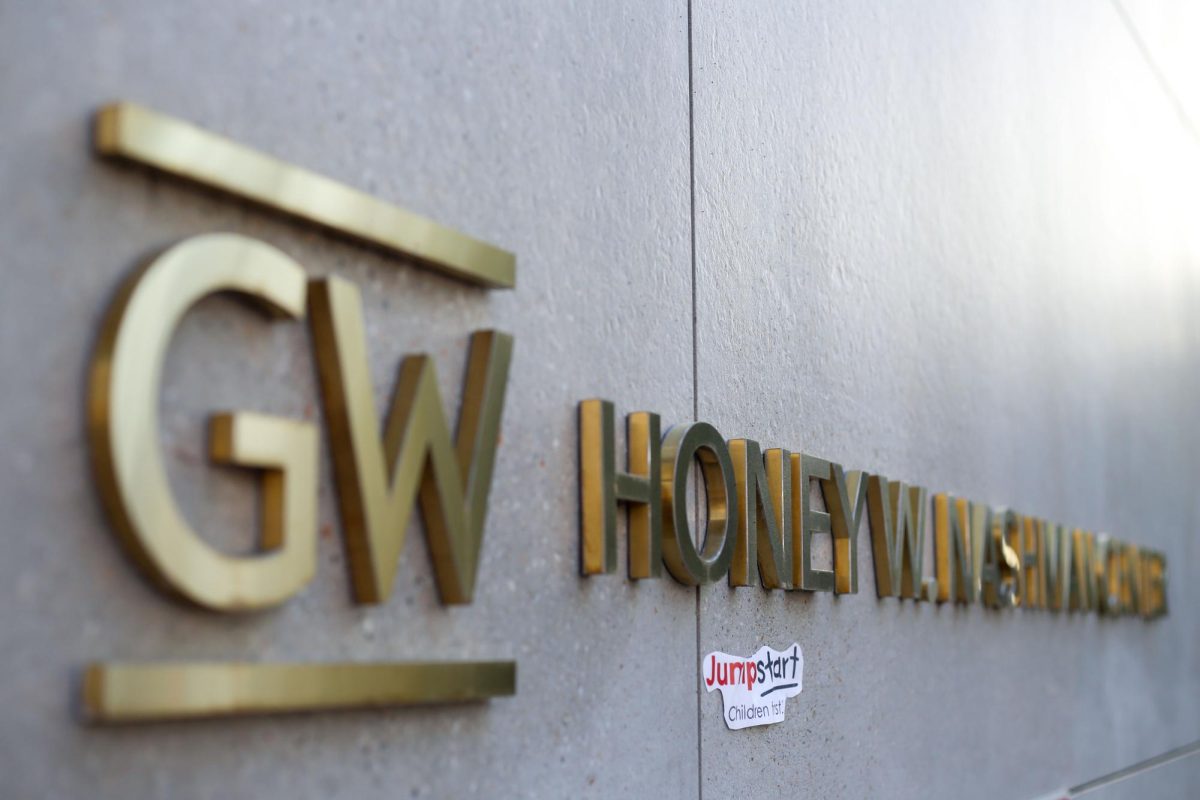Updated: June 27, 2024 at 1:55 p.m.
A GW official told the D.C. deputy mayor that a growing counterprotester presence at the pro-Palestinian encampment in University Yard provoked University leaders’ “increasing concern of violence,” according to an email last month obtained under a public records request.
Renee McPhatter, GW’s assistant vice president for government and community relations, listed five incidents involving counterprotesters as examples of escalating “provocative” activity at the encampment in an email to D.C. Deputy Mayor for Public Safety and Justice Lindsey Appiah on May 4 — four days before local police cleared the demonstration. The message is one of a dozen exchanged between GW, city officials and local police during the 13-day protest that The Hatchet obtained in June under the Freedom of Information Act, which grants the public access to emails sent and received by a government address.
In her message to the deputy mayor, McPhatter included reports of counterprotesters’ attempts and alleged plans to remove the Palestinian flag that pro-Palestinian demonstrators fastened to the George Washington Statue in U-Yard, as well as verbal altercations between demonstrators, counterprotestors and a prominent Israeli activist. The correspondence follows the Metropolitan Police Department’s reported refusal of GW’s request for officers to clear the encampment within its first 24 hours on April 26.
“We want to prevent an ‘UCLA incident’ on our campus in which the campus was engulfed in hours of violence,” McPhatter’s May 4 email states, an apparent reference to when counterprotesters at the University of California, Los Angeles attacked pro-Palestinian demonstrators with fireworks and noxious gases days earlier.
Just past midnight on May 5, the deputy mayor replied to McPhatter, saying she would share her email with MPD Chief Pamela Smith and Assistant Executive Chief Jeffery Carroll so they could be “in close coordination” with GW personnel as they make “operational decisions.”
McPhatter’s email is a contrast from the University’s public communications during the encampment and after police’s sweep and arrests days later — none of which explicitly reference the actions of counterprotesters as reasoning for GW’s safety concerns or its request for police assistance. Counterprotesters frequented U-Yard during the protest, sometimes verbally sparring with protesters, but the disputes never resulted in physical violence.
In a message calling for the city’s support in ending the protest the afternoon of May 5, hours after Appiah replied to McPhatter, University President Ellen Granberg cited protesters overrunning barricades, vandalizing a statue and flag and arguing with police officers as unsafe and said GW had failed to deter them from “escalating the situation.”
None of the five examples McPhatter outlined in her email to the deputy mayor were attributed to a source, but The Hatchet verified four of them with its reporting. University spokesperson Julia Metjian declined to comment on whether officials witnessed any of the reported incidents firsthand or could provide sources for any of the reports.
‘We are seeing more counter protesters’
“Here are several incidents that have happened since Friday afternoon,” McPhatter wrote in her May 4 email to Appiah before listing the incidents that she described as “increased” and “more provocative” protest activity at the encampment.
McPhatter first references a counterprotester attempting to leave earlier that day with the Palestinian flag that demonstrators fastened to the George Washington statue in U-Yard. Protesters followed the counterprotester until local police stopped the individual, she claimed. The Hatchet reported that the counterprotester returned the flag to demonstrators, who then reattached the flag to the statue.
She then states the GW Police Department received a report at 8:40 a.m. that morning that a group of parents and alumni planned to visit the encampment to remove the Palestinian flag and stickers from the statue. The Hatchet could not immediately verify this claim.
“With the semester winding down and Commencement coming, more people are coming to campus,” McPhatter wrote to Appiah. “We are seeing more counter protesters coming to University Yard who want to restore the defaced George Washington statue and remove any Palestinian flags on University Yard.”
McPhatter’s third incident describes the electronic billboard truck that circled campus on May 4 and displayed messages like “Scarring proof of Hamas brutality revealed” and “Jewish students you are not alone” alongside news reports of Hamas-perpetrated violence in Israel.
She also recounted Israeli activist and former Israel Defense Forces soldier Rudy Rochman’s visit to a crowd of 50 protesters on H Street at the encampment that day. Protesters announced that “an IOF soldier” — or “Israel Occupation Forces,” which pro-Palestinian protesters have used in reference to the IDF — was on campus and circled Rochman while chanting “Settler, settler go back home, this campus is our freedom zone.”
The email quotes a demonstrator saying “I don’t think liberation looks like a f*cking IOF soldier on our campus.”
The last incident in the email’s list details a group of counterprotesters who entered the encampment the evening of May 3. McPhatter quotes one counterprotester yelling “Get off my campus,” as about 20 encampment protesters approached, one telling the demonstrators “Don’t engage with Zionists,” the email states.
‘We remained in regular communications’
In the deputy mayor’s reply to the GW official’s email the next day, Appiah states that Granberg spoke directly with Carroll on the morning of May 4 and was slated to speak with Smith.
Metjian declined to comment on the content of the meeting but said campus safety was the primary concern.
“As GW is located in the heart of D.C., we had a special responsibility to engage with city officials during the encampment,” Metjian said in an email. “We remained in regular communications with city leaders and the Metropolitan Police Department to ensure they were aware of the evolving situation on our campus.”
The next morning, pro-Palestinian demonstrators at the encampment held a community meeting and alleged that officials declined requests to meet and negotiate with protesters.
After MPD cleared the encampment on May 8, arresting at least six GW students and deploying pepper spray, Smith said in a press conference that the covert presence of counterprotesters at the encampment was a factor that made the protest “more volatile and less stable” and triggered police’s decision to clear.
She also pointed to reports of protesters from other schools traveling to GW and demonstrators gathering items that could be used for “offensive and defensive weapons.” An MPD spokesperson later said officers observed demonstrators gathering rocks and plywood. The Hatchet couldn’t immediately verify this claim.
The department deferred comment to Smith’s press conference on whether the exchange about counterprotesters between McPhatter and Appiah contributed to MPD’s decision to clear the encampment. The deputy mayor’s office did not return a request for comment.
‘As requested’
Other emails obtained in the records request include exchanges between GW and the city about the security of members of Congress’ visit to the encampment on May 1 and University statements that officials released following the clearing.
McPhatter told Appiah on May 1 that members of the House Oversight Committee planned to tour the encampment later that day, according to one email. Officials did not notify students in advance of the visit, but members met with Granberg and Provost Chris Bracey before touring U-Yard.
McPhatter said GW officials increased police presence and followed MPD guidelines to ensure a safe visit, asking the deputy mayor for recommendations on additional safety measures officials could take.
Officials were also “told” the members planned to walk through U-Yard and that GWPD requested Capitol Police not to enter the protest area for “safety reasons,” according to McPhatter’s email.
Metjian declined to say what safety reasons officials were referring to when they advised Capitol Police not to enter.
“When the House Committee members informed the university of their intention to visit the campus, the University worked to safely accommodate their visit,” Metjian said.
Most of the other email exchanges obtained in the records request involve Vice President for Communications and Marketing Ellen Moran asking Carroll and Susana Castillo, the director of communications for the Mayor’s Office, to vet the University’s statements about MPD’s sweep.
“As requested,” Moran said in an email to Castillo with GW’s statement after its release.
The emails show that a GW official also forwarded Granberg’s May 5 message to the community to Richard Livingstone, the director of the Mayor’s Office of Community Relations and Services. In another email sent the next day, Michael Rossetti, a doctoral student at the University, forwarded Granberg’s May 5 message to the Executive Office of the Mayor and MPD.
In the email’s body, Rossetti said he was “disappointed and saddened” to hear of MPD’s alleged refusal to clear the encampment on its first night.
“Change your stance immediately,” Rossetti wrote in his email. “Give aid to University police. Help us restore peace and order on campus, and bring back an environment where all members of the community feel safe and free to move about across campus.”
This post has been updated to clarify the following:
This post has been updated to clarify that Michael Rossetti sent Granberg’s May 5 email to the Executive Office of the Mayor and MPD independently of his professional role at the University.





